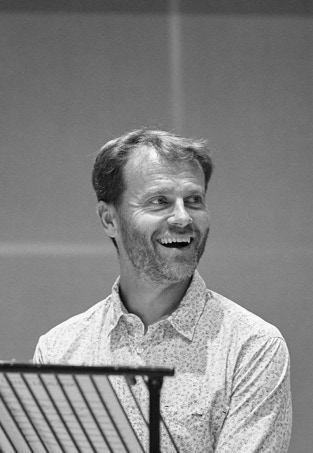Head of a Woman with Untidy Hair
(‘La Scapigliata’)
WITH
Cipriano de Rore – Or che’l ciel e la terra (1542)
THE IMAGE
This beautiful image, in the guise of an unfinished painting of considerable virtuosity, is accepted as Leonardo’s by some scholars but not by others. Its format is very strange, in that it is not obviously part of an unfinished composition of a Madonna and Child, or of a saint or a secular subject. In any event it embodies the nature of the ‘Leonardesque’ in an archetypal way, even if it is not by Leonardo himself. Amongst Leonardo’s universally accepted works, it is closest to the lost painting of Leda and Swan, in which the Spartan princess looks down tenderly at the infants who are the product of her union with the swan (Jupiter in rapacious disguise).
Without an overt subject for her glance, the beautiful lady is here dreamily isolated in her thoughts. Her beauty is eloquently apparent but she remains inaccessible to our enquires about what she might be thinking. The perpetual inaccessibility of the lady’s emotions is the central motif of Renaissance love poetry, in which the lover is tormented to breaking point by unrequited passion.
For Martin Kemp, the picture represents the essence of the Leonardesque images of beloved ladies in the same way that the followers of Petrarch exhibit Petrarchism.
MARTIN KEMP
———————————————————————————————————————
THE MUSIC
Leonardo’s beloved Dante and Beatrice appeared to define the Renaissance view of the love for an idealised woman and was developed half a century later by Petrarch and his Laura. In reality though, the focus is on the poet’s own feelings and thoughts. ‘Or che’l ciel e la terra’ portrays a quiet night-time scene before focussing on the man unable to sleep because of his passion, which also brings him pain: ‘one hand both heals me and pierces me’. Like the Tallis, each voice in Rore’s music is equally important though the texture it creates does not provide an easy way to hear the text on initial listening. But look at the sonnet itself and then enjoy the exquisite if subtle touches of harmonic colour and syncopation, and your ears will acclimatise to Rore’s embodiment of yearning.
ROBERT HOLLINGWORTH

TEXT / TRANSLATION
Or che’l ciel e la terra e’l vento tace
E le fere e gli augelli il sonno affrena
Notte il carro stellato in giro mena
E nel suo letto il mar senz’onda giace,
Veggio, penso, ardo, piango, e chi mi sface
Sempre m'è inanzi per mia dolce pena;
Guerra è’l mio stato, d’ira e di duol piena,
E sol di lei pensando ho qualche pace.
Così sol d’una chiara fonte viva,
Move’l dolce e l’amaro ond’io mi pasco;
Una man sola mi risana e punge,
E perchè ’l mio martir non giunga a riva,
Mille volte il dì moro e mille nasco:
Tanto da la salute mia son lunge.
Francesco Petrarca (1304-74) Rime sparse, 164
Now that the heavens and the earth and the wind are silent
and the beasts and the birds are reined in by sleep,
night drives its starry chariot about
and in its bed the sea lies without a wave;
I am awake, I think, I burn, I weep: and she who destroys me
is always in my mind, to my sweet pain:
warlike is my state, full of anger and sorrow,
and only by thinking of her do I have peace.
Thus from one sole, clear, living fountain
spring the sweet and the bitter on which I feed:
one sole hand heals me and pierces me;
and so that my suffering may not reach an end,
a thousand times a day I die and a thousand am born,
so far am I from health.

I FAGIOLINI
Eleanor Minney - mezzo-soprano
Clare Wilkinson - mezzo-soprano
Nicholas Hurndall Smith - tenor
Matthew Long - tenor
Charles Gibbs - bass
Nicholas Hurndall Smith
Tenor
Credit Matthew Brodie